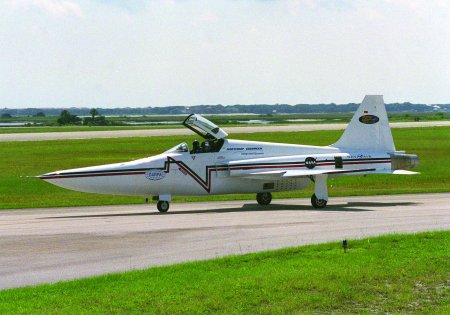Northrop Grumman plans to decide by mid-year on whether to go-ahead with a purpose-built quiet supersonic technology test aircraft that could provide the basis for a long-range strike aircraft demonstrator, and potentially, a supersonic business jet.
The studies follow the successful conclusion of supersonic boom suppression flight tests under the US Defense Advanced Research Projects Agency (DARPA) Quiet Supersonic Platform programme. These not only showed that the modified Northrop F-5 shaped sonic-boom demonstrator aircraft significantly reduced the supersonic shockwave, but critically validated the design tools used to shape the modified nose and to predict the reduction in initial overpressure.
"We'd like to put together a spiral demonstrator that we could use over and over," says Northrop Grumman director of advanced systems capability Charlie Guthrie. The team is reviewing a wide set of alternatives ranging from existing or retired military supersonic aircraft like the Convair F-106 and Rockwell B-1B to an all-new aircraft.
The used airframes represent the lowest cost option, "but we get the most benefit out of the new-build supersonic test platform", adds Guthrie. The test aircraft would be used to evaluate several critical technology areas including supersonic laminar flow, supersonic inlet and engine stability, propulsive and aerodynamic efficiency and various enhanced and synthetic vision systems.
The testbed aircraft, if sanctioned, could be aimed at another demonstrator programme in 2005, says Guthrie. "We are in the process of evaluating different potential test programmes right now, and balancing the budget requirements against the benefits. We have several options and within three or four months we should know which one will be the best way to go."
The testbed is also believed to be the best way towards establishing the basis for a full-scale demonstrator, possibly in the form of a NASA X-plane or a follow-on DARPA- funded testbed. This would necessarily require compliance from the US Federal Aviation Administration, which would have to approve supersonic overflights over the USA, says Northrop Grumman chief test pilot Roy Martin. "There is a general consensus that a reduced-scale aircraft of some sort would be valuable. We're looking at a trade-off between a smaller and larger demonstration aircraft."
GUY NORRIS / LOS ANGELES

Source: Flight International
















